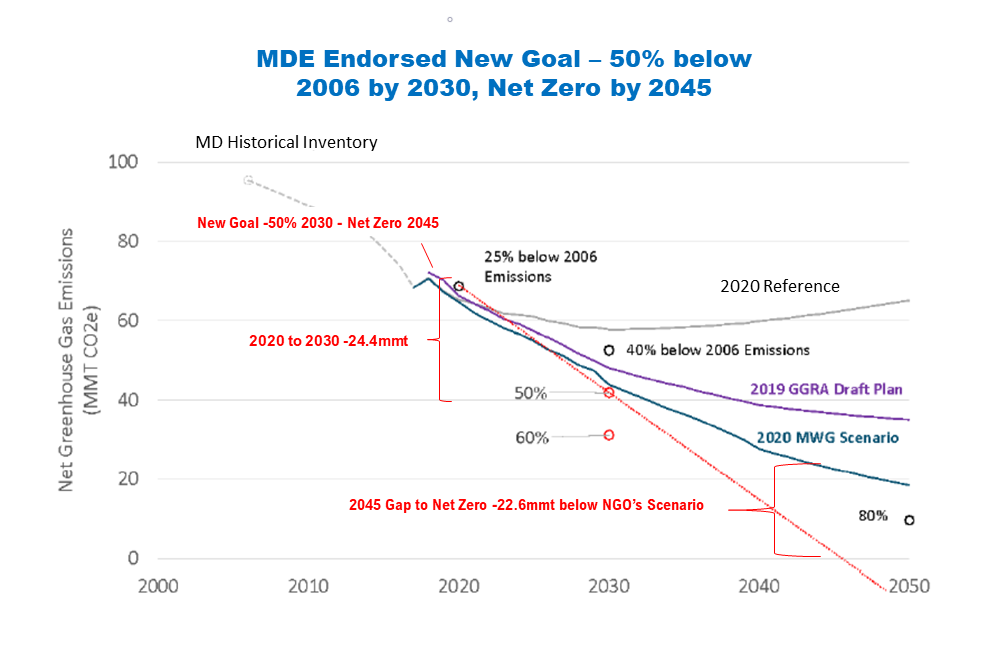
The Maryland Department of Environment (MDE) has endorsed accelerating the state’s greenhouse gas (GHG) reduction targets. That accelerated schedule would require the state to achieve a 50% reduction in GHG emissions (compared to 2006) by 2030 and reach net-zero carbon emissions by 2045. Maryland’s climate law currently requires a 40% reduction by 2030 and contains a goal of up to a 90% reduction by 2050.
The most recent MDE plan to meet current targets (shown in the GGRA Draft Plan/purple line on the graph below) had contained a combination of strategies that would meet the 2030 target but would fall short of the 2050 goal. MDE, like many other climate regulators, is relying on future technologies — such as carbon capture, small nuclear reactors and renewable natural gas (including biofuel or natural gas generated through wind or solar power) — to close the outyear gap of 25 million metric tons in carbon emissions.

Over the summer, a group of climate and environmental groups, lead by the Sierra Club and the Natural Resources Defense Council, proposed a scenario (the NGO’s Scenario/green line in the attached graph) that assumes several major initiatives to lower GHG emissions. They include:
- 400,000 existing buildings will be retrofitted for energy efficiency and electric heat by 2030. That number will reach 1.3 million by 2050.
- Electric vehicle adoptions will increase to 800,000 by 2030 and to 5 million by 2050.
- 75% of electricity will be provided by solar, wind, biomass and hydroelectric by 2040.
The NGO’s plan would meet the current 2030 targets. But even with those aggressive measures, the plan falls about 10 million metric tons short of the 80% reduction target in 2050.
Faced with a year-end deadline imposed by the General Assembly to produce a climate plan, MDE has now endorsed a new reduction goal of 50% by 2030 and a target of net-zero, economy-wide emissions by 2045 (the Net-Zero 2045/red line on the graph). The 50% goal would require a reduction of 24 million metric tons of carbon over the next 10 years. The 2045 net-zero target is nearly 22 million metric tons lower than levels the NGO’s scenario was modeled to achieve.
Policies that the administration would adopt to close these gaps have not yet been selected and modeled. State law requires greenhouse gas reduction targets be achieved in ways that increase jobs and benefit the economy. That provision in the Green House Gas Reduction Act has come under criticism in recent months with NGOs proposing changes to the definition of cost effective and how economic benefits are measured.